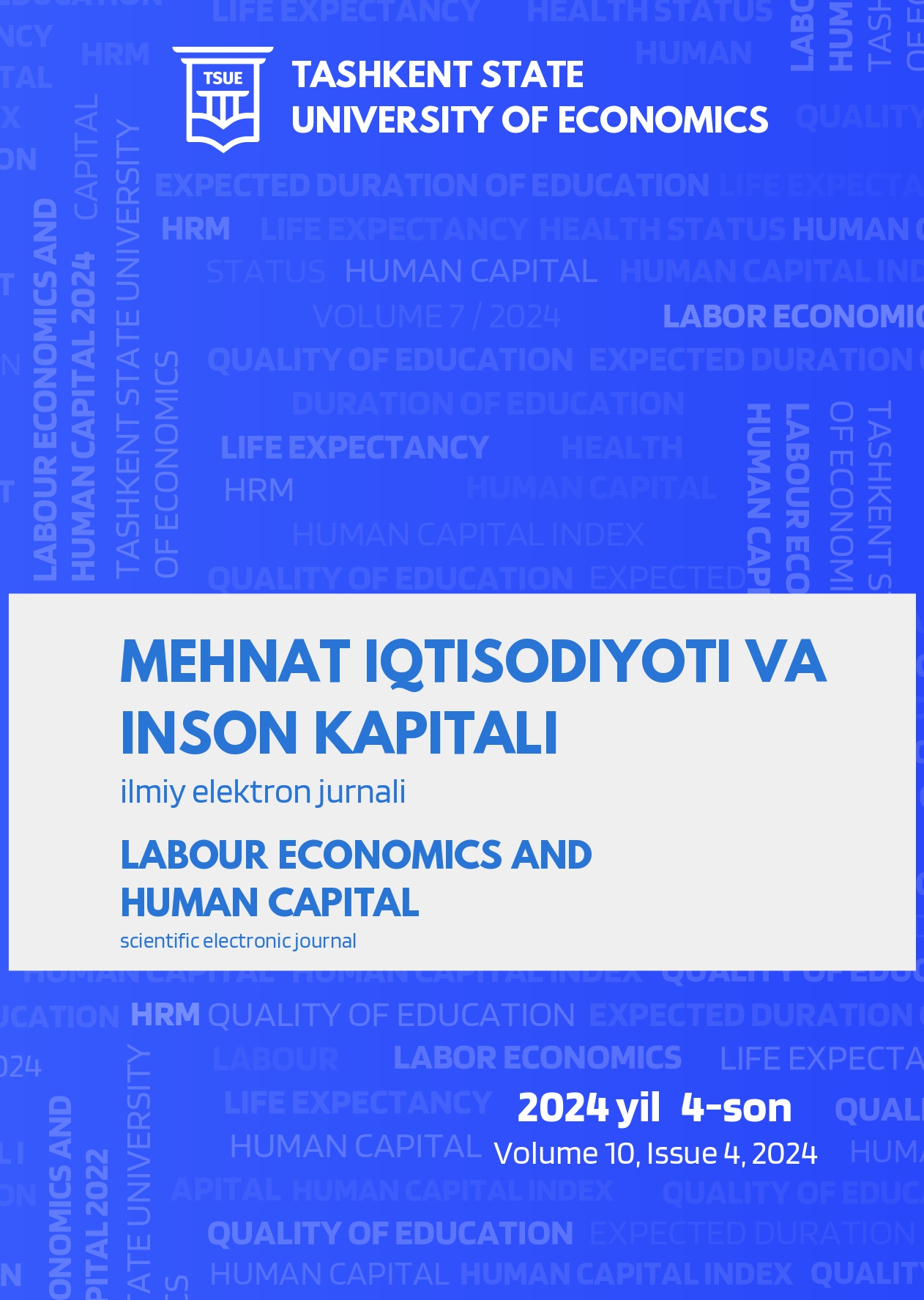ASSESSMENT OF THE IMPACT OF EDUCATIONAL INSTITUTIONS ON SOCIETY BASED ON GENDER INDICES
Keywords:
Gender Inequality Index (GII), Gender Development Index (GDI), Gender Social Norms Index (GSNI), Social Institutions and Gender Index (SIGI), Global Women, Peace, and Security Index (GWPS), Uzbekistan gender index ratings, Gender equality in Uzbekistan, International gender indices, Gender gap analysis, United Nations Development Program (UNDP), Organization for Economic Co-operation and Development (OECD), Gender-based education indicators, Gender policy evaluation, Enhancing Uzbekistan's gender position, Institutional frameworks for gender equality, Gender-focused research in Uzbekistan.Abstract
The author of this article conducted a study on the issue of enhancing the Republic of Uzbekistan's position in the international gender index ratings and analyzed the work that is currently being conducted in this area. The institute employed the "Gender Inequality Index," "Gender Development" Index, "Gender Social Norms" Index of the United Nations Development Program, "Social Institutions and Gender" Index of the Development Center of the Organization for Economic Co-operation and Development, and "Global Women, Peace and Security" within the research framework. The evaluation methodologies of the indices were examined, and the educational indicators of Uzbekistan were analyzed.
References
1. Bardhan K., Klasen S. UNDP's gender-related indices: A critical review //World Development. – 1999. – Т. 27. – №. 6. – С. 985-1010.
2. Beneria L., Permanyer I. The measurement of socio‐economic gender inequality revisited //Development and Change. – 2010. – Т. 41. – №. 3. – С. 375-399.
3. Seth S. Inequality, interactions, and human development //Journal of Human Development and Capabilities. – 2009. – Т. 10. – №. 3. – С. 375-396.
4. Anand S., Sen A. Gender Inequality in Human Development: Theories and Measurement. Occasional Papers 19, Human Development Report Office, New York. – 1995.
5. Klasen S. UNDP's gender-related measures: Current problems and proposals for fixing them, Discussion Papers, No. 220, Georg-August-Universität Göttingen, Courant Research Centre - Poverty, Equity and Growth (CRC-PEG), Göttingen, 2017 https://www.econstor.eu/bitstream/10419/157265/1/882698184.pdf
6. The 2021/2022 Human Development Report. New York, NY, 2022. P. 269. https://hdr.undp.org/system/files/documents/global-report-document/hdr2021-22pdf_1.pdf
7. Schüler D. The uses and misuses of the Gender‐Related Development Index and Gender Empowerment Measure: a review of the literature //Journal of Human Development. – 2006. – Т. 7. – №. 2. – С. 161-181.; Geske Dijkstra A. Towards a fresh start in measuring gender equality: A contribution to the debate //Journal of Human Development. – 2006. – Т. 7. – №. 2. – С. 275-283.; Klasen S. Gender-related indicators of well-being //Human well-being. – Palgrave Macmillan, London, 2007. – С. 167-192.
8. Inglehart, R., C. Haerpfer, A. Moreno, C. Welzel, K. Kizilova, J. Diez-Medrano, M. Lagos, P. Norris, E. Ponarin and B. Puranen et al. (eds.). 2014. World Values Survey: All Rounds—Country-Pooled Datafile Version. Madrid: JD Systems Institute. http://www.worldvaluessurvey.org/WVSDocumentationWVL.jsp.
9. Barro, Robert and Jong-Wha Lee, 2013, “A New Data Set of Educational Attainment in the World, 1950-2010.” Journal of Development Economics, vol 104, pp.184-198.
10. Barro, Robert and Jong-Wha Lee, 2013, “A New Data Set of Educational Attainment in the World, 1950-2010.” Journal of Development Economics, vol 104, pp.184-198.
11. https://stats.oecd.org/Index.aspx?DatasetCode=RGRADSTY#
12. https://globaldatalab.org/shdi/metadata/esch/






